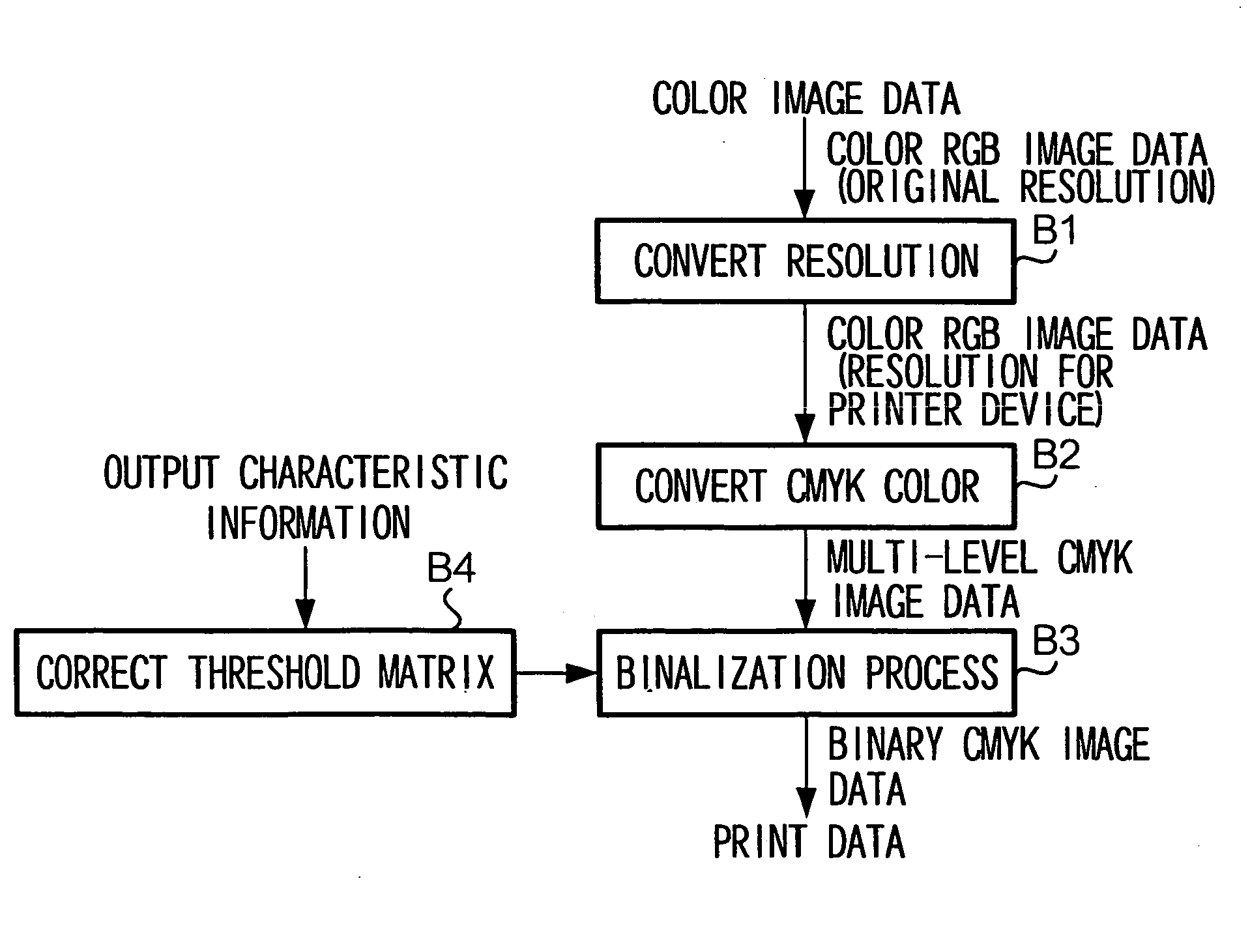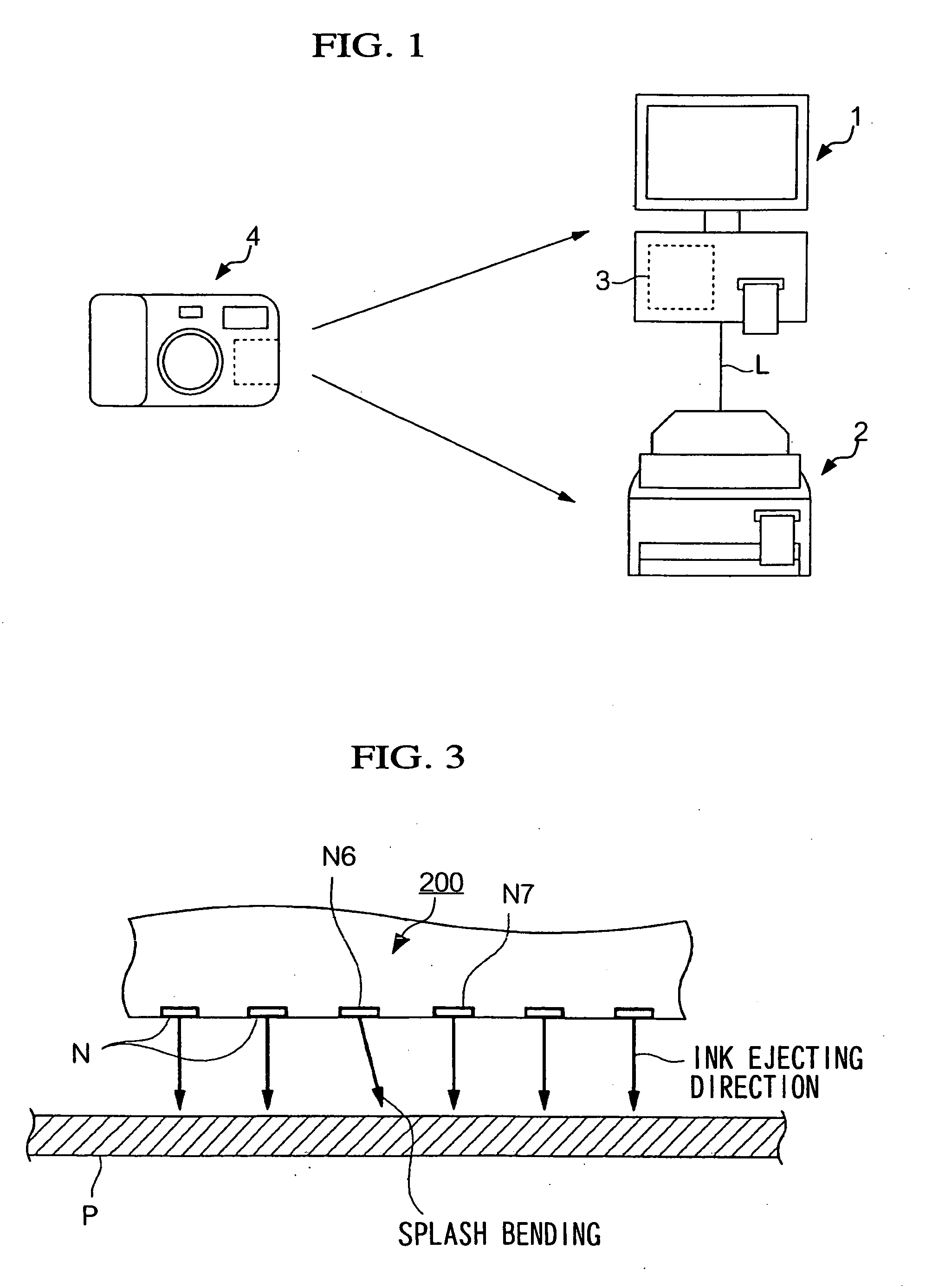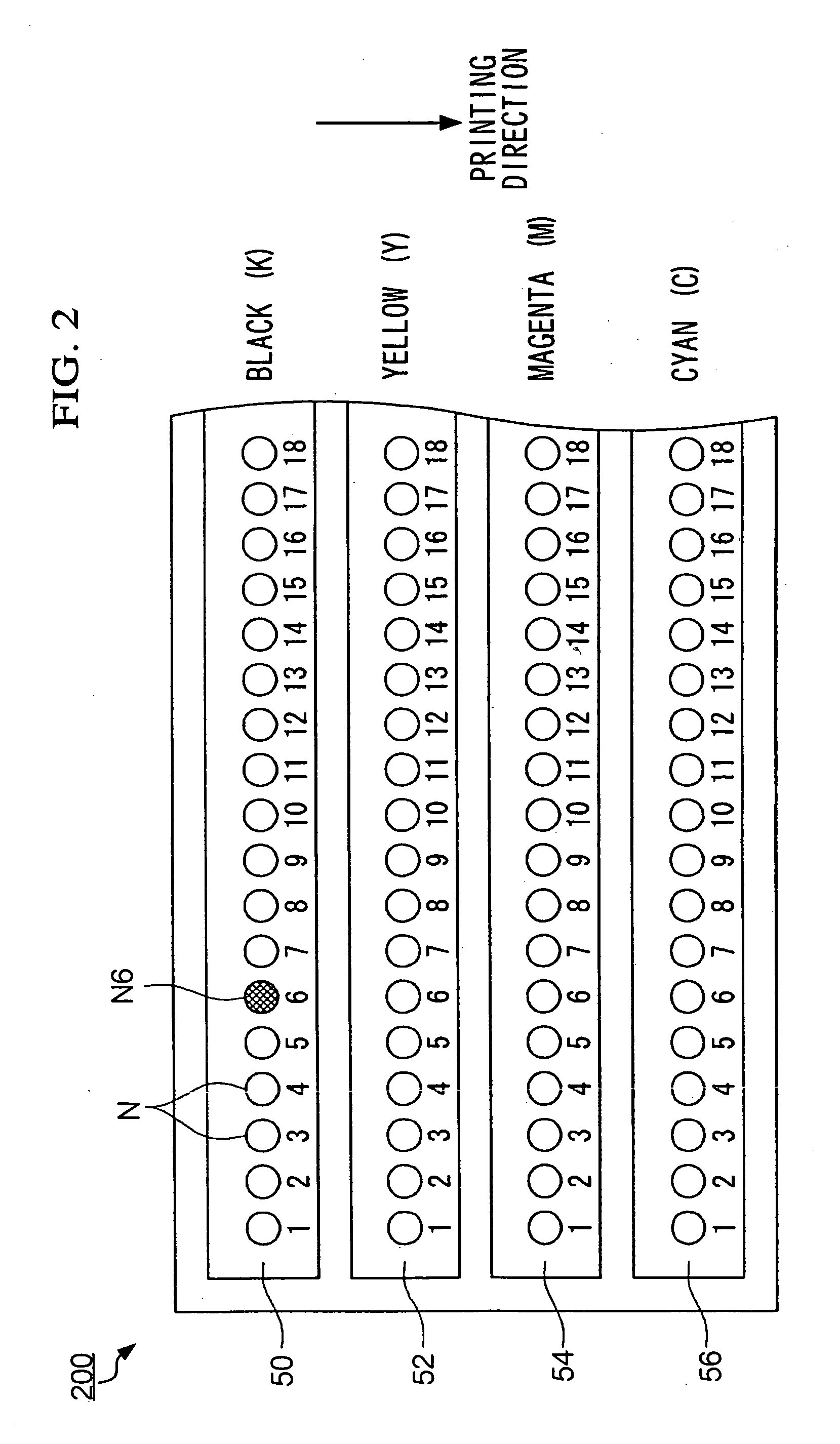Printing device and print image processing device
a printing device and print image technology, applied in the field of printing devices and print image processing devices, can solve the problems of slow print time of the described carriage-type inkjet printer, the type of inkjet printer described above, and the time taken to complete a print job is considerably longer than that taken, so as to reduce the probability of ejection of ink dots, reduce the probability of light and dark banding, and reduce the effect of print image processing
- Summary
- Abstract
- Description
- Claims
- Application Information
AI Technical Summary
Benefits of technology
Problems solved by technology
Method used
Image
Examples
Embodiment Construction
[0043] Description will now be given below of an embodiment of a printer device and print image processing device, with reference to the attached drawings.
[0044]FIG. 1 shows an inkjet printer 2 of the present embodiment and a personal computer 1 which drives an inkjet printer 2. In the print system shown in FIG. 1, image data of, for example, a digital still camera 4 is read by personal computer 1 or inkjet printer 2; the image data is then printed by inkjet printer 2. A device driver 3 for driving inkjet printer 2 is loaded in personal computer 1. Device driver 3 is driven by application software, to thereby to drive inkjet printer 2, i.e., to cause inkjet printer 2 to perform a printing operation.
[0045] Inkjet printer 2 according to the embodiment is a line head printer, as described above, and a nozzle head 200 of the printer 200 is configured, as shown in FIG. 2, to include a black nozzle array 50 where a plurality of nozzles Ns for ejecting Black (B) ink are lineally disposed...
PUM
 Login to View More
Login to View More Abstract
Description
Claims
Application Information
 Login to View More
Login to View More - R&D
- Intellectual Property
- Life Sciences
- Materials
- Tech Scout
- Unparalleled Data Quality
- Higher Quality Content
- 60% Fewer Hallucinations
Browse by: Latest US Patents, China's latest patents, Technical Efficacy Thesaurus, Application Domain, Technology Topic, Popular Technical Reports.
© 2025 PatSnap. All rights reserved.Legal|Privacy policy|Modern Slavery Act Transparency Statement|Sitemap|About US| Contact US: help@patsnap.com



